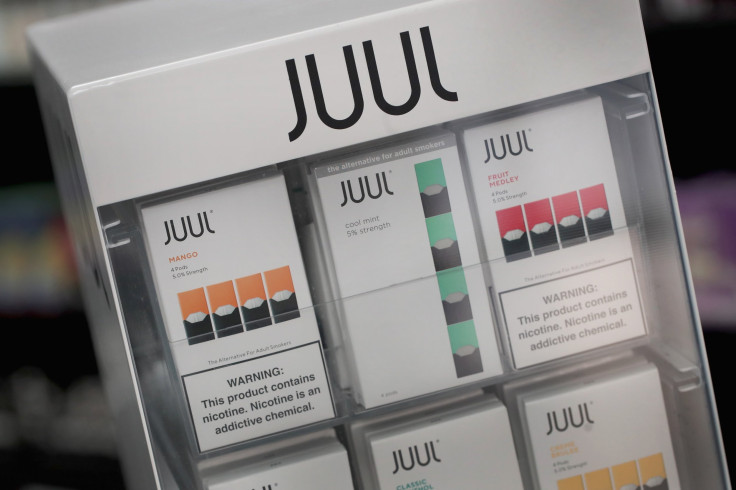Is Juul Safe? Teens Turn To Discreet E-Cigarette, Facing Danger

American youth are using e-cigarettes, but many of them seem to be unaware of the potential hazards -- or even that they contain nicotine.
About 2.1 million high school and middle school students used e-cigarettes in 2017, according to the National Youth Tobacco survey for that year. Juul began selling e-cigarettes in 2015, and now represents two-thirds of the US e-cigarette market.
Research conducted at the Stanford University School of Medicine found that some young adult Juul users aren’t understanding this type of e-cigarette can be addictive. “We need to help them understand the risks of addiction. This is not a combustible cigarette, but it still contains an enormous amount of nicotine — at least as much as a pack of cigarettes,” said Bonnie Halpern-Felsher, PhD, a Stanford professor of pediatrics.
One issue with Juul e-cigarettes is that they contain more nicotine than other brands. Roughly 20 cigarettes worth of nicotine are included in one Juul pod, according to the Truth Initiative organization. One Juul pod contains 5 percent nicotine.
In October, the FDA investigated Juul with an inspection at its headquarters in San Francisco where it took many documents. One concern they had was Juul’s sales and marketing practices because they wanted to learn more about why the company’s products are appealing to youth.
“In some cases, our kids are trying these products and liking them without even knowing they contain nicotine,” said FDA Commissioner Scott Gottlieb, MD.
Juul sold 16.2 million vapes in 2017, and it’s sales increased 641 percent between 2016 and 2017, according to TIME. The FDA recently said it will take action to work with e-cigarette companies to reduce vaping in the youth population.
One idea about vaping’s potential upside is that it could help a smoker of tobacco cigarettes quit by replacing them with e-cigarettes. Among youth who vape, this might not be effective, however. A research study paper published in JAMA Network stated, “In this study of adolescents, vaping more frequently was associated with a higher risk of more frequent and heavy smoking 6 months later.” In this particular study, vaping did not help reduce smoking.
“These teens aren’t just experimenting,” said researcher Adam Leventhal, director of the Health, Emotion and Addiction Laboratory at the Keck School of Medicine of University of Southern California. “A significant portion are progressing to more regular levels of smoking.”
© Copyright IBTimes 2024. All rights reserved.




















